Table of Contents
Introduction to Cardamom Pods
When you need to substitute cardamom pods, the top 5 alternatives are cinnamon, cloves, nutmeg, star anise, and vanilla. Each has specific uses and precise measurements to maintain flavor in your recipes. Cardamom pods are a staple in Indian, Middle Eastern, and Scandinavian cooking, known for their aromatic, slightly sweet, and spicy flavor in both savory and sweet dishes.
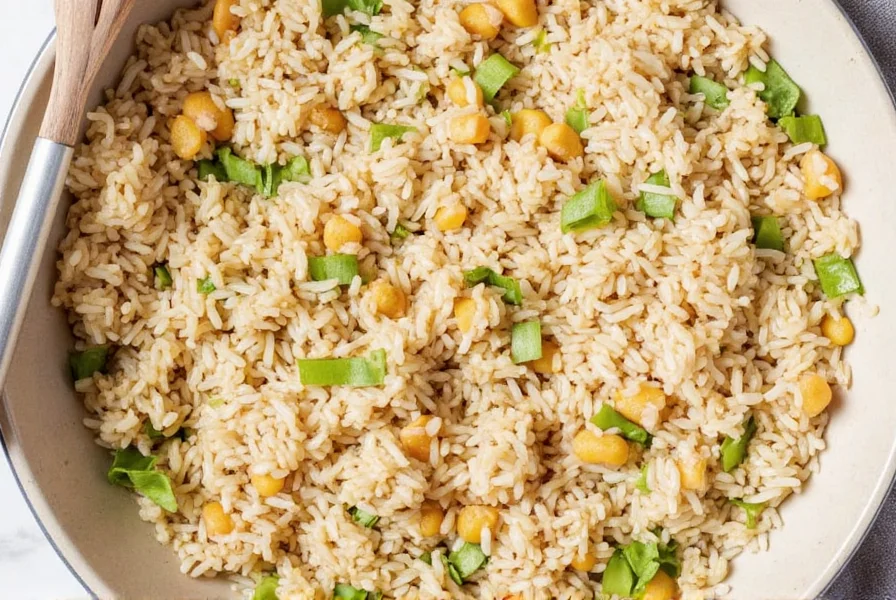
Why Substitute Cardamom Pods?
There are several reasons you might need to substitute cardamom pods:
- You don't have any on hand.
- You're allergic to cardamom.
- You want to experiment with new flavors.
- You're looking for a more affordable alternative.
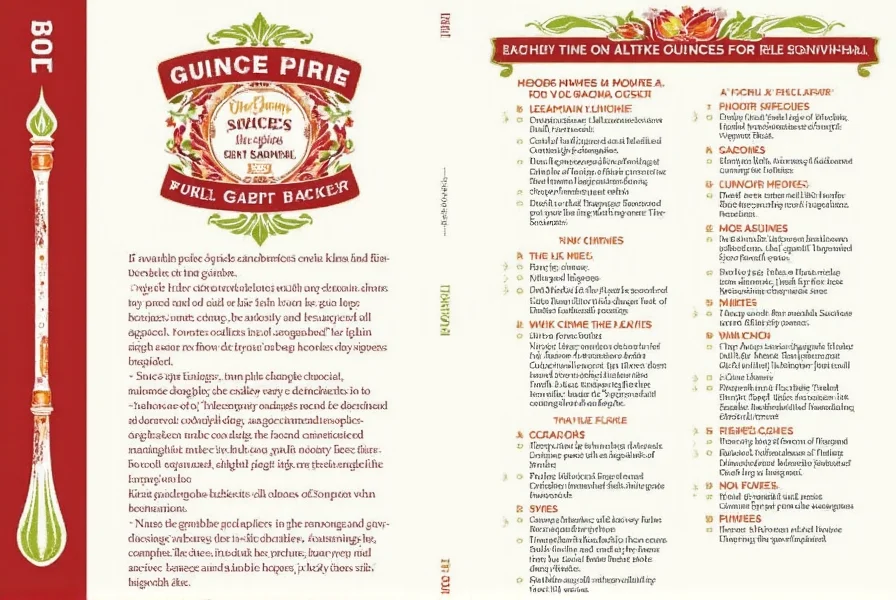
Top 5 Substitutions for Cardamom Pods
Here are the top 5 alternatives with precise measurements for different recipes:
1. Cinnamon Sticks
For every 3-4 cardamom pods, use 1 cinnamon stick. If using ground cinnamon, substitute 1/2 teaspoon per pod. Ideal for desserts, chai, and baked goods due to its sweet, spicy, and warm profile. Adjust to taste as cinnamon can overpower.
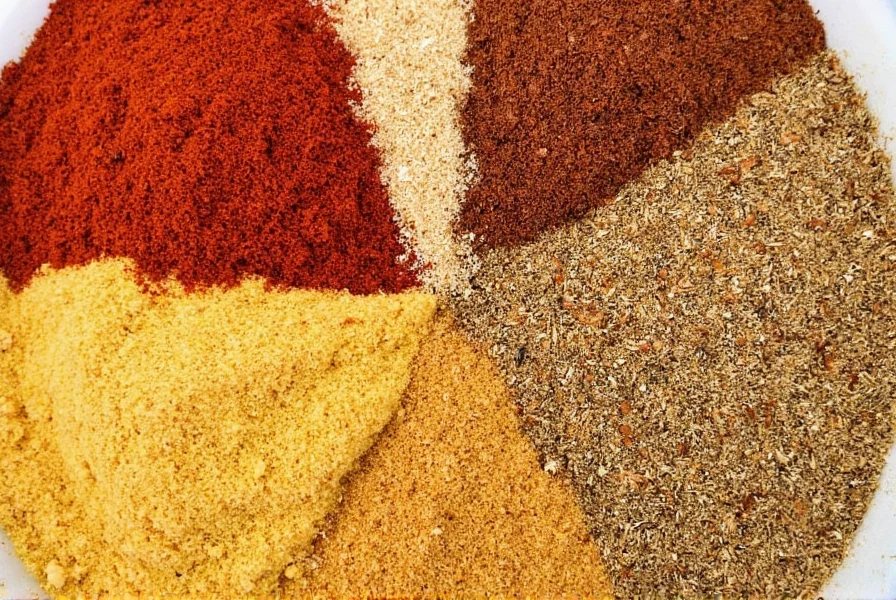
2. Cloves
Use 1-2 cloves per cardamom pod. Start with less as cloves are very strong. Best for spice blends, meat dishes, and baked goods with their pungent, slightly sweet flavor. Add early in cooking to mellow the intensity.
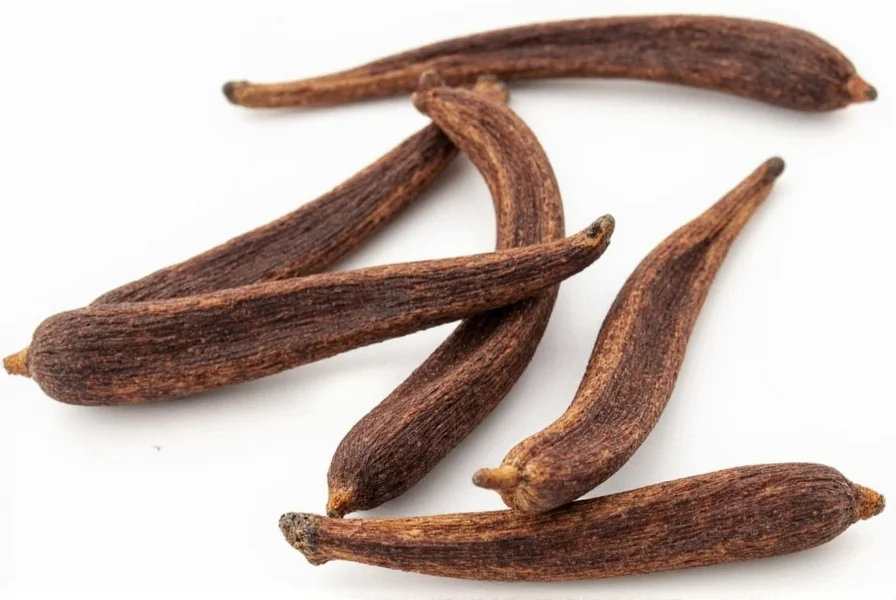
3. Nutmeg
Substitute 1/4 teaspoon ground nutmeg per cardamom pod. Grate fresh for best results. Works well in custards, pies, and soups with its nutty, warm profile. Avoid overuse to prevent bitterness.
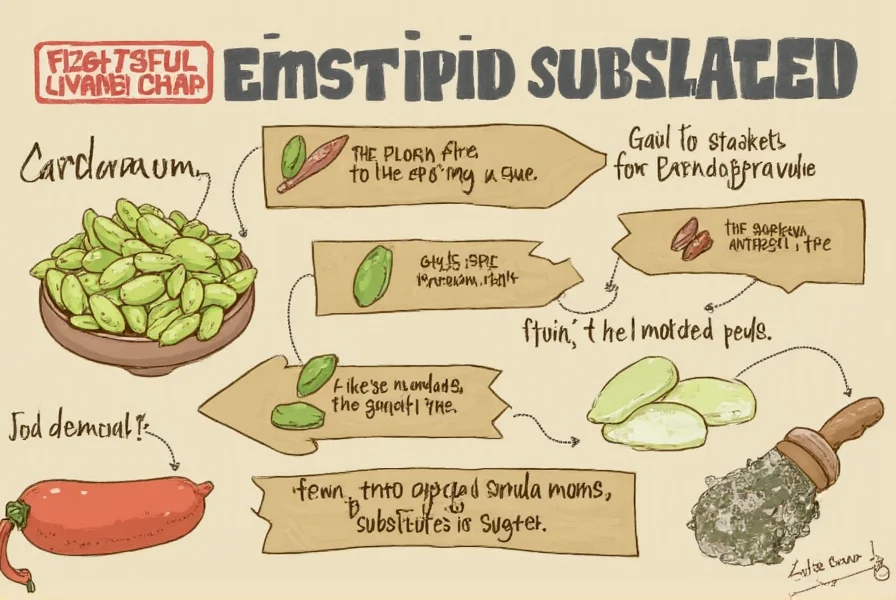
4. Star Anise
Use 1 star anise for every 2-3 cardamom pods. Remove before serving to prevent bitterness. Perfect for Asian dishes, broths, and sauces with its strong licorice-like flavor.
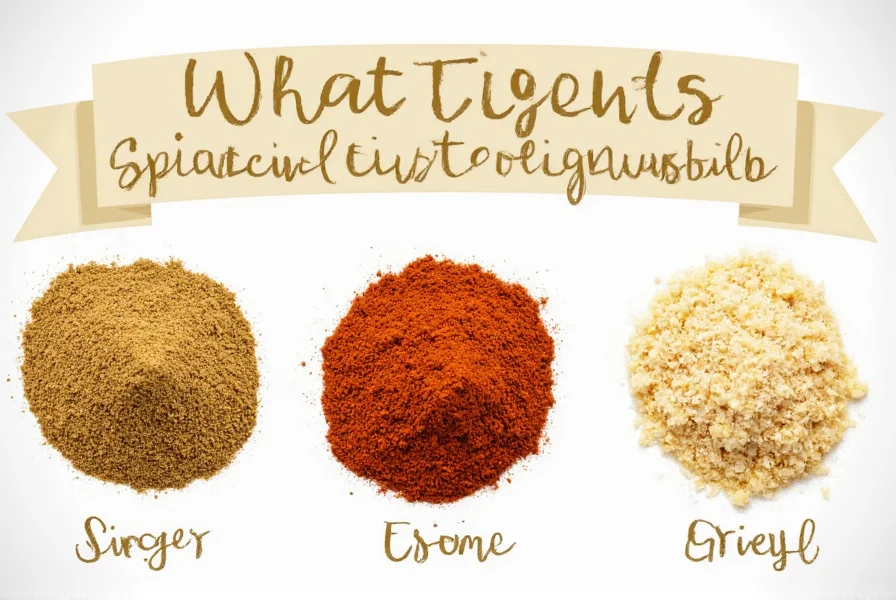
5. Vanilla Extract (for Sweet Dishes Only)
Substitute 1/2 teaspoon vanilla extract per cardamom pod. Best for desserts and baked goods to mimic sweetness and fragrance. Use sparingly for subtle enhancement.
| Substitute | Best For | Flavor Profile | Use Tips |
|---|---|---|---|
| Cinnamon Sticks | Desserts, Chai, Baked Goods | Sweet, Spicy, Warm | 1 stick per 3-4 pods or 1/2 tsp ground per pod; adjust to taste |
| Cloves | Spice Blends, Meat Dishes, Baked Goods | Strong, Pungent, Slightly Sweet | 1-2 cloves per pod; add early to mellow flavor |
| Nutmeg | Custards, Pies, Soups | Nutty, Warm, Slightly Sweet | 1/4 tsp ground per pod; grate fresh |
| Star Anise | Asian Dishes, Broths, Sauces | Licorice-Like, Strong | 1 star per 2-3 pods; remove before serving |
| Vanilla Extract | Desserts, Baked Goods | Sweet, Aromatic | 1/2 tsp per pod; use sparingly |
Buying Guide: Choosing the Right Spice
When choosing a substitute for cardamom pods, consider the dish type and flavor profile. Fresh spices yield better results. Store whole spices in airtight containers away from light and heat to maintain potency.

Cooking Tips with Substitutes
Substituting spices requires precision for optimal results:
- Start Small: Add 1/2 to 2/3 of the substitute amount compared to cardamom. Taste and adjust gradually.
- Balance Flavors: Pair strong substitutes (cloves, star anise) with citrus, cream, or sugar to balance intensity.
- Use Fresh Spices: Whole spices retain flavor longer than pre-ground. Grate nutmeg fresh and crush cinnamon sticks for maximum aroma.
- Dish-Specific Adjustments: For savory dishes, prioritize cinnamon or star anise. For desserts, combine cinnamon and nutmeg for best results.
- Experiment Safely: Mix substitutes like cinnamon + nutmeg + tiny pinch of cloves for complex flavor profiles similar to cardamom.
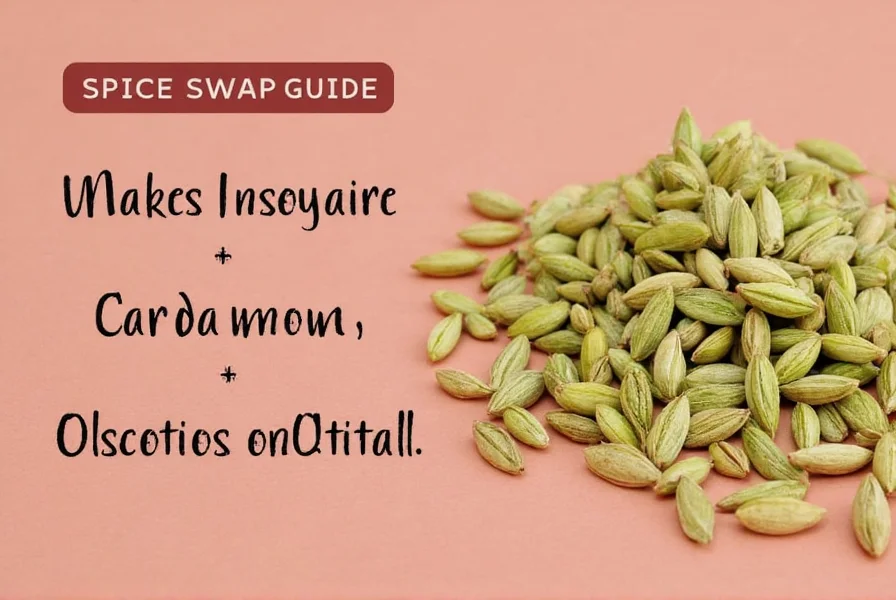
Frequently Asked Questions
How do I substitute ground cardamom for cardamom pods?
If your recipe calls for cardamom pods but you only have ground cardamom, use 1/4 teaspoon of ground cardamom for each pod. Conversely, if substituting pods for ground cardamom, use one pod for every 1/4 teaspoon of ground spice. Freshly cracked cardamom seeds provide more vibrant flavor than pre-ground.
Which substitute works best for baking?
For most baking, combine 1/4 teaspoon cinnamon and 1/4 teaspoon nutmeg to replace 1/2 teaspoon cardamom. In Scandinavian recipes, allspice (1:1 ratio) is a traditional alternative.
Can I use pumpkin pie spice instead of cardamom?
Yes. Pumpkin pie spice (cinnamon, ginger, nutmeg, cloves) works as a substitute. Use 3/4 the amount of pumpkin pie spice compared to cardamom, as blends are typically stronger.
What's the best cardamom substitute for chai tea?
For chai, use 1 cinnamon stick per 3-4 cardamom pods. Add 1 clove for complexity. Star anise (1 per 4 pods) also works well for licorice notes.
How much of the substitute should I use?
Start with 1/2 to 2/3 the cardamom amount. For example, 1 tsp cardamom → 1/2 tsp substitute. Cloves and star anise are stronger—use 1/3 the amount. Always taste and adjust.
Can I combine substitutes for a more authentic cardamom flavor?
Absolutely. Mix equal parts cinnamon and nutmeg (1/2 tsp each) with a pinch of cloves (1/8 tsp) to replicate cardamom's complexity. This blend captures warmth, sweetness, and subtle pungency.
Conclusion
Substituting cardamom pods doesn't mean sacrificing flavor. With precise measurements and strategic combinations, you can maintain recipe integrity using cinnamon, cloves, nutmeg, star anise, or vanilla. Always start with smaller amounts and adjust to taste for optimal results.
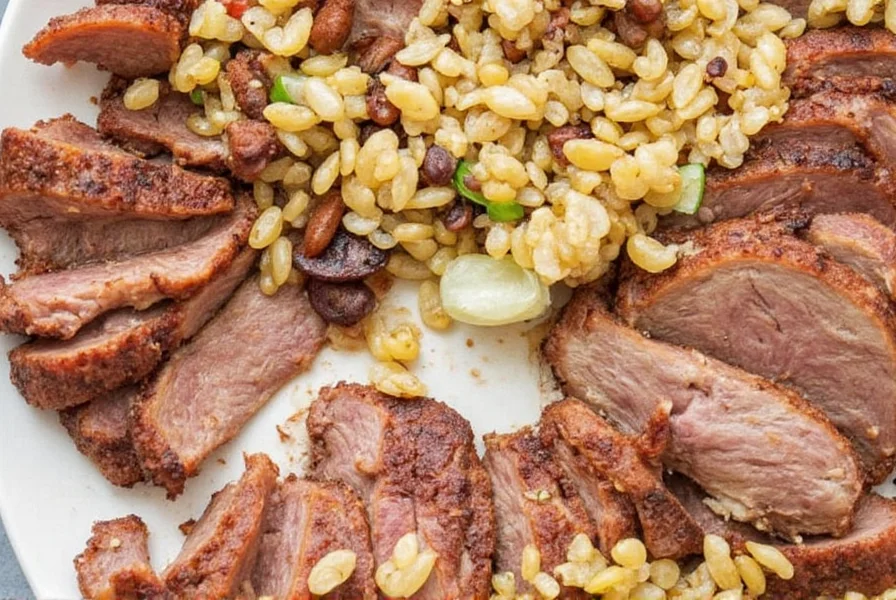
Mastering cardamom substitutions opens creative culinary possibilities while ensuring your dishes remain vibrant and flavorful, even without the original spice.










 浙公网安备
33010002000092号
浙公网安备
33010002000092号 浙B2-20120091-4
浙B2-20120091-4